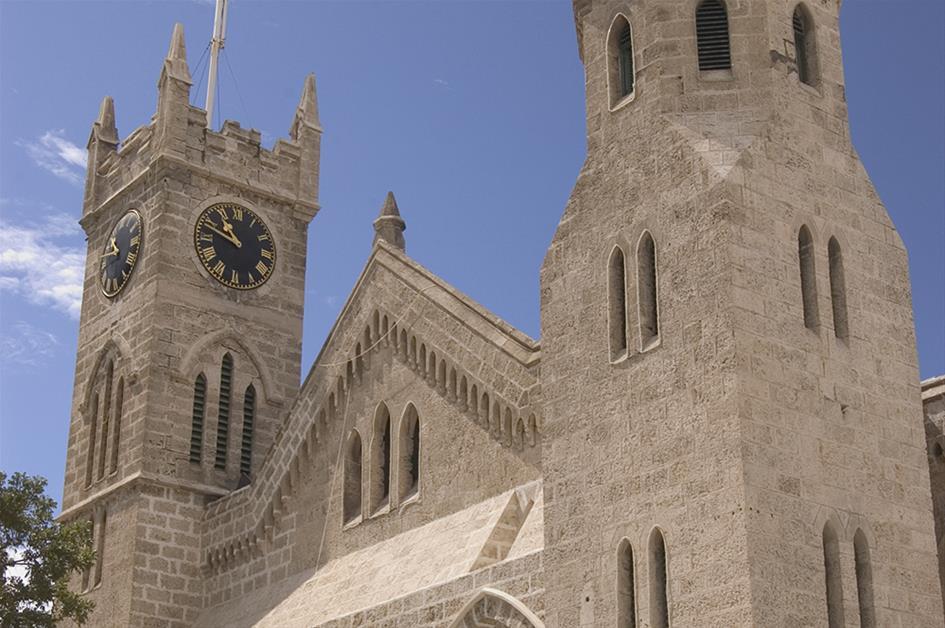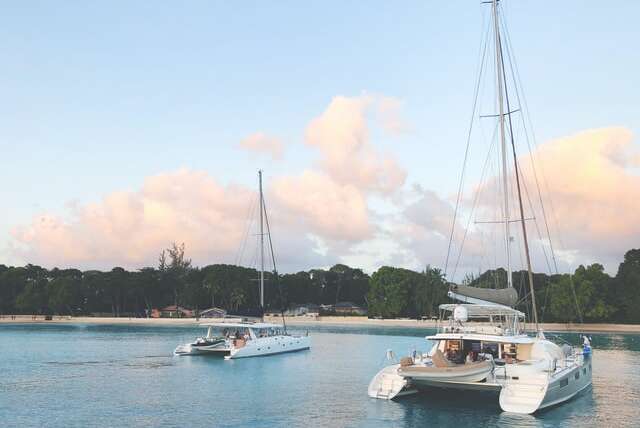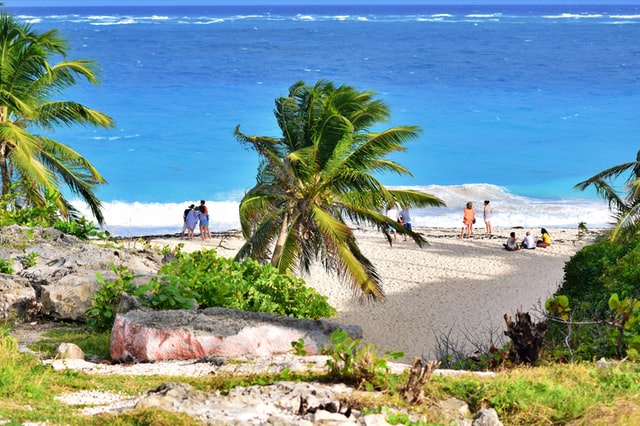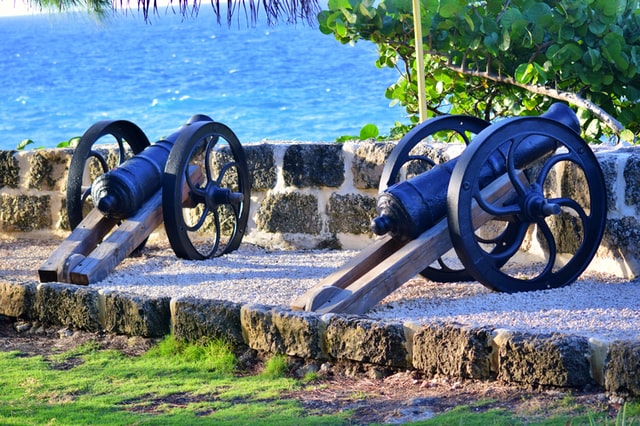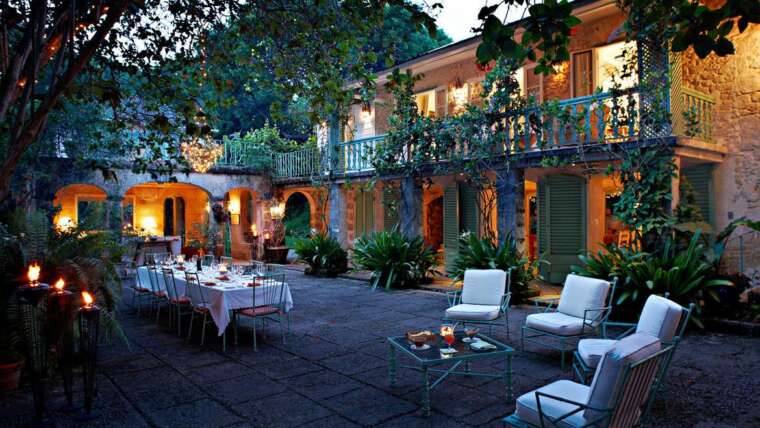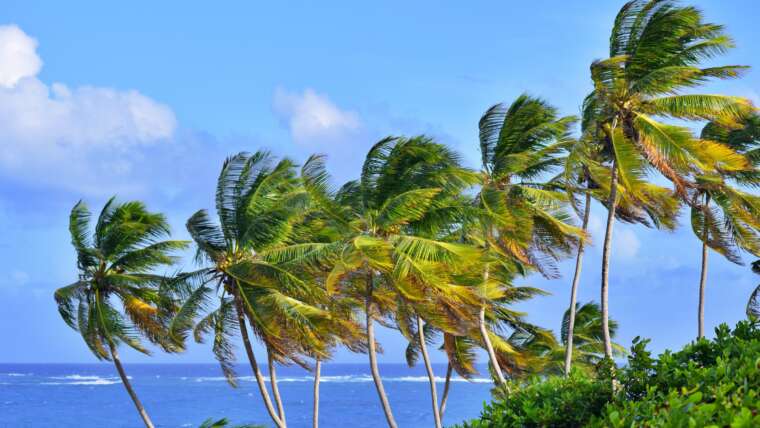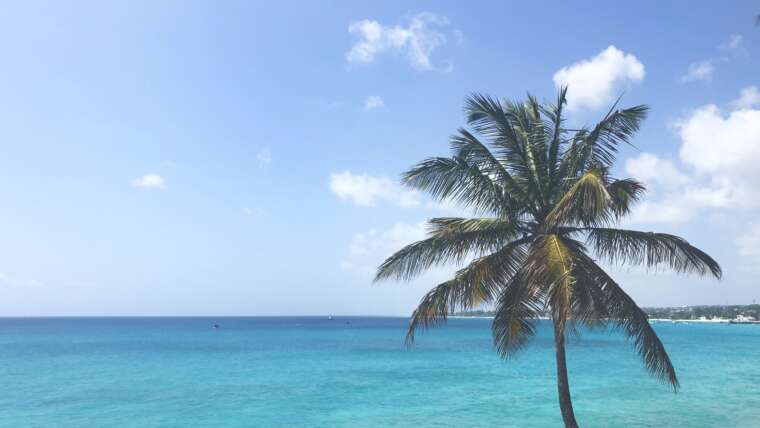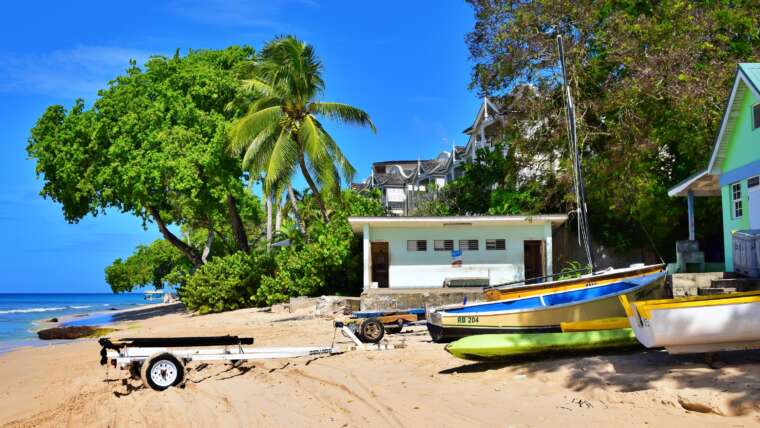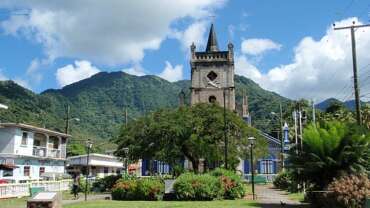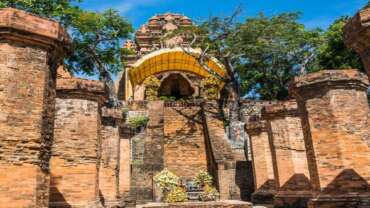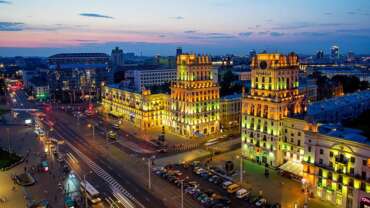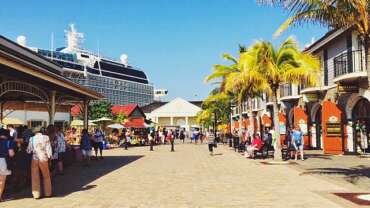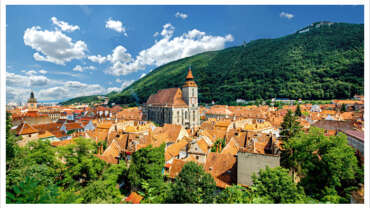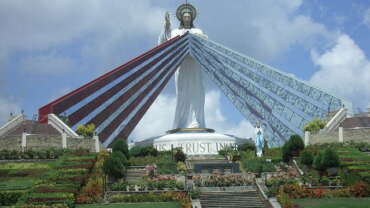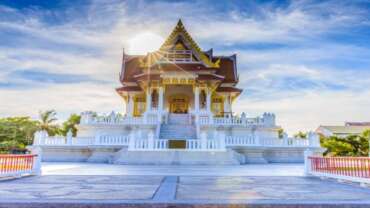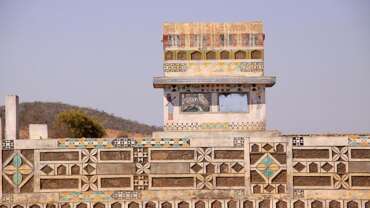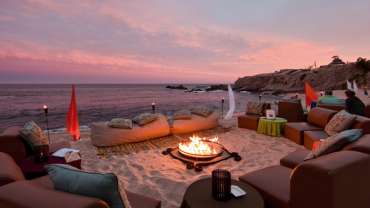Barbados - We Care
Barbados is an eastern Caribbean island and an independent British Commonwealth nation. Bridgetown, the capital, is a cruise-ship port with colonial buildings and Nidhe Israel, a synagogue founded in 1654. Around the island are beaches, botanical gardens, the Harrison’s Cave formation, and 17th-century plantation houses like St. Nicholas Abbey. Local traditions include afternoon tea and cricket, the national sport.
History of Barbados
Experience Our History & Culture. Interesting Facts About Barbados.
HISTORY & CULTURE
The history of Barbados is unique, and we Bajans (the familiar term for Barbadians) are at ease with our past and proud architects of our future.
Start your Caribbean cultural holiday here with some interesting facts about Barbados
– Our island was colonised by the English early in the 17th century
– Before then, Barbados was inhabited by Carib and Arawak Native Americans
– Transformed by the plantation system and slavery, we were the world’s number one sugar producer by 1650
– Barbados is the oldest continuing parliamentary democracy outside England
– We achieved universal voting rights in 1943 and opted for full independence from the UK in 1966
– Our cultural roots are in the plantation slavery economy, a unique blend of West African and European
– We speak English with a distinct accent, spiced with words in West African-English pidgin called Bajan
– Enrich your Barbados experience by visiting some of our amazing historical places, including Gun Hill Signal Station, George Washington House and our Parliament Buildings in historic Bridgetown. Take time to look back in time.
HISTORIC ARCHITECTURE
Barbados combines visually stunning buildings with the chance to learn about the famous historical architects behind them
The island of Barbados is packed with more stunning historical architectural buildings than anywhere else in the Caribbean. In years gone by, buildings were constructed from coral rather than wood, a natural resource which was popular on the islands. Take a look around Barbados and you’ll stumble across historical architectural styles gracing the imposing and unique great houses, some of which date back as far as the early 17th century. Plantation Houses such as these showcase Caribbean colonial architecture which dates from the British influence of the Georgian and Jacobean eras. If historical sightseeing has drawn you to Barbados, then waste no time heading for the museums, old towns and traditional villages. Combining uniquely Caribbean charm with a genuine glimpse into the past, these sites are also home to statues, monuments and fascinating landmarks. The Garrison, located in the Barbados capital of Bridgetown, is a Unesco World heritage site, and the Barbados National trust, as well as private patrons, has been heavily involved in restoring the examples of historical architectural styles to their former glory.
Of course, Barbados is now home to modern buildings, infrastructure and architecture, but the locals are in no hurry to sweep the past aside. Modern buildings offer the facilities visitors rely upon, but do so in a way which is sympathetic to the colonial architecture surrounding them. A historic sightseeing tour of this part of the Caribbean is a treat packed with secret treasures, timeless sites and local charm.
LANDMARKS AND MONUMENTS
Barbados is an island where the past sits side by side with the present. The Caribbean landmarks and famous historical sites bring history to vibrant life.
If you’re planning a holiday on the stunning Caribbean island of Barbados, make sure your sightseeing itinerary takes in visits to some of the many famous historical monuments and landmarks. Virtually every aspect of life in Barbados is captured in a landmark or monument of some kind – from military history and architecture all the way to religious sites and the story of Barbadian agriculture. Stunning natural landmarks abound, such as Animal Flower Cave, Coles Cave, Harrison’s Cave and The Spout, while those which have been constructed by the people of the island include the Bridgetown Historical Centre, Garrison Historic Area, Nidhe Israel Synagogue, St. James Parish Church, Drax Hall Estate, Sam Lord’s Castle and St. Nicholas Abbey, to name just a few. Barbados people are proud of their history, and you can visit and take photographs which will make you proud to have been a witness to it.
The rich history and heritage of Barbados means that the island is packed with monuments and statues celebrating the individuals who have played key roles in its cultural and social development. Travel to Highway 1 on the Emancipation roundabout and you’ll find Bussa, a massive bronze statue depicting a slave with broken chains, which celebrates the emancipation of the island and its people. In Rock Hall you’ll find a similar monument depicting a family of freed slaves in celebration of the fact that Rock Hall was the first free village in Barbados. The capital of Bridgetown boasts more patriotic monuments and memorials than anywhere else in the Caribbean, and iconic examples such as the Emancipation Statue and Independence Arch attract sightseeing tourists from all over the world.
LIBRARIES AND MUSEUMS
The libraries and museums in Barbados are packed with fascinating books and beautiful objects, everyone with a story to tell.
If you’re looking for a Barbados library, then you’re pretty much spoiled for choice. The two main examples on the island are the Shilstone Memorial Library and the National Library in the capital Bridgetown. The first of these, the Shilstone Library, has a diverse and fascinating collection of more than 6,000 books journals and pamphlets. No matter what area of life in the Caribbean interests you, you’ll find plenty worth exploring here – from history, pre-history and archaeology, through to information on art, architecture, furniture and craft, alongside a collection of stunning rare books from the 17th, 18th and 19th centuries. As a visitor to Barbados you can become a member of the National Library and while away some time exploring the reference section, which is packed with information on the society and history of this beautiful island.
If you want to take a more hands-on approach to studying Barbados history, then visit one of the many museums in Barbados. There are no fewer than nine museums, where you’ll find information and educational content, set out in an interactive and entertaining manner. The newest of the museums boast state of the art displays which utilize cutting edge technology, but the more traditional institutions have plenty of offer visitors as well. The Barbados Museum and Historical Society has an amazing 500,000 artifacts which, between them, preserve the past of Barbados and tell the tale of Caribbean development right up until the 21st Century.
Some of the museums in Barbados are housed within buildings which, in themselves, are historically significant. Pay a visit while you’re exploring the island and you’ll relish the chance to explore its rich and fascinating history.
MUSIC AND ENTERTAINMENT
Enjoy live music in Barbados when you visit the venues that have entertained visitors from all over the world
You’ll never be short of entertainment and fun when you visit Barbados. Step out under the stars and you’ll find an exciting and unique slice of nightlife around every single corner. From Barbados calypso music at a music festival to jumping bars, tempting rum shops and a piano bar hosted by a world famous Broadway star, you’re sure to be able to find something that fits with your idea of fun. No matter what your idea of a good night out is, it’s waiting for you in Barbados – from romantic cruises and dinner shows to night submarine dives and special activities for children, there’s always something happening. If you want a unique taste of Caribbean entertainment, then take in some limbo and fire eating as part of a floor show you’ll remember forever.
As well as fantastic weather, beautiful beaches and the stunning shoreline, Barbados is famed for its music with live performers keen to entertain every visitor in venues scattered across the island. Dance along to folk and popular music or sample the more sedate pleasures of performances with a Western classical or religious influence. In Barbados, the music of Britain and Africa comes together, creating the diversity of Barbadian folk, Caribbean jazz and opera, reggae, tuk music, calypso, spouge and soca.
Amongst the stars you’ll find performing in Barbados will be those famous the whole world over as well as performers who’ve conquered the Caribbean. If you want award winning quality then you’re in the right place and Barbados music festivals attract an international roster of artistes, offering a taste of every type and genre of music. If you’re dreaming of a trip to Barbados, then rest assured the sweet sound of music will be a huge part of it.
LOCAL CUISINE
Combine sun, sea and sand with tasty local Caribbean food when you take your vacation on Barbados
Barbados is famed for stunning beaches and the beauty of the sea which surrounds it, but every year thousands of visitors discover just why it’s also known as the ‘Culinary Capital of the Caribbean’. The cuisine you’ll find in Barbados is as diverse as it is delicious. The many cultures that have explored, colonized and enjoyed the island have each brought their own distinct flavors and ideas, and these have combined to produce a unique tropical offering. A typical Bajan meal might take influences from Africa, India, Ireland and Britain and combine them in the following way; a main meal of meat or fish, marinated in herbs and spices, accompanied by a selection of salads and a range of hot and spicy side dishes. Officially, the National Dish of Barbados is Cou-cou and Flying Fish, and it consists of cornmeal grain and fresh okra, together with savory stewed flying fish flavored with deliciously fresh onion, garlic, thyme, tomatoes and pepper. Also popular with visitors and locals alike are fish cakes. Delicious fried morsels, these snacks consist of salted cod, flour, herbs and pepper, and you’ll find them all over the island, from casual dining spots to the most sophisticated soirees.
Fine dining in the best local restaurants offers sophisticated cuisine prepared by chefs from all over the world. Many of the best eateries offer fresh seafood such as snapper, kingfish and shrimp, prepared using a dazzling variety of delicious techniques. Your local hosts will always ensure that there’s plenty of drink on hand when you’re dining, and a fresh fruit drink made with Mount Gay rum will help to counter the fiery heat of so many Bajan dishes. One example is felernum, a drink which combines sugar, amaretto, rum and lime juice in a delicious taste explosion, while mauby is a non-alcoholic alternative made from the juice of boiled bark.
Barbados Heritage
Visit Barbados and discover our rich and fascinating heritage
BARBADOS HERITAGE
Discover Barbados heritage through our vibrant culture, historic buildings and the friendly people who live here.
With a rich cultural mix of customs and traditions from our English, African and West Indian ancestry, Barbados has a unique culture with strong links to the past.
As well as an enviable mix of sun, sea and sand, Barbados is proud of our globally significant heritage sights and attractions. Visitors to Barbados can enjoy the best of both worlds.
Barbados is known for its wonderfully warm climate, clear, azure-blue seas and soft sandy beaches. Add in tropical forests and lush natural beauty and you have a recipe for paradise. It’s no surprise Barbados is one of the world’s most sought after holiday destinations, and lucky visitors will tell you that there’s so much more to this tropical island. Welcoming people, the best food in the Caribbean and the relaxed lifestyle ensure our visitors fall in love with Barbados. World-class heritage is the icing on the cake.
If you have a passion for history and a love of the past, look no further than Barbados. With a designated UNESCO world heritage site and a rich and colourful story, visitors can immerse themselves in history and watch it brought to life around them through historic sites, traditions, festivals and fun cultural events throughout the year.
HISTORIC BRIDGETOWN AND ITS GARRISON
BARBADOS UNESCO WORLD HERITAGE SITE
On June 25, 2011 Barbados joined an elite group of nations with world heritage properties when Historic Bridgetown and its Garrison was inscribed on the UNESCO World Heritage List. This inscription is a tremendous feat for a small Caribbean island states. It presented the opportunity to address the obvious geographical imbalance in sites from Latin American and the Caribbean. UNESCO’s commitment to the identification, protection and preservation of the world’s cultural and natural heritage is enshrined in the Convention concerning the Protection of the World Cultural and Natural Heritage (1972).
World Heritage sites are places on Earth that are of Outstanding Universal Value to humanity. In other words, these properties must have significance not only for the countries in which they are located, but for the world as a whole. As such, they have been inscribed on the World Heritage List to be protected for future generations to appreciate and enjoy.
Historical Importance
Since European settlement almost 400 years ago, Bridgetown became a major port for the shipment of goods, including sugar, and enslaved people in the British Atlantic World. Bridgetown’s irregular settlement patterns and early 17th century street layout reflects the medieval influence of early English settlers on town planning. Its spontaneous development and serpentine street layout supported the development and transformation of creolized forms of tropical architecture built by African labour in a European style.
Barbados was the first port of call for ships making the trans-Atlantic crossing. The island’s geographic location created a strategic military advantage, protecting British trade interests against French, Spanish and Dutch aggression, while also projecting Britain’s imperial power in the region. The town’s fortified port spaces were linked along the Bay Street corridor from the town to the Garrison, circling Carlisle Bay. A complex system of military government evolved in Historic Bridgetown’s Garrison after 1650 and the site developed into one of the most structurally complete and functional British colonial garrisons in the Atlantic World.
Historic Bridgetown and its Garrison participated in the international trade of not only goods and people, but also in the transmission of ideas and cultures in the colonial Atlantic World. By the 17th century, trade relationships were established with England, North America, Africa and the colonial Caribbean, making the port a cosmopolitan centre of commerce, settlement and exploitation.
Bridgetown Today
Bridgetown today still functions as one of the island’s business and commercial hubs. Visitors will also appreciate the abundance of malls and duty free shopping available in Bridgetown, as well as the local charm the city brings. Street vendors with their colourful trays of fresh produce and goods can still be found plying their trade in certain locations across Bridgetown. The inner marina and famous Chamberlain Bridge create a safe space for fishing boats, catamarans and pleasure crafts. The east end of the boardwalk leads to Independence Square, a quiet respite in the center of the city. The square has many benches that offer beautiful waterfront views of some of Bridgetown’s most historic buildings, including the Parliament Building.
BARBADOS UNESCO ATTRACTIONS
Bridgetown is a port town and the capital of Barbados. Its central business district is the national centre serving as the primary focus for major office, parliamentary, and shopping services for the island. The Garrison is one of eight Cultural Heritage Conservation Areas on the island and represents a very distinguished era of military colonial history. Within the precincts of this Site, there are one hundred and fifteen listed buildings. The combination of Historic Bridgetown and its Garrison represents a worthy collection of history, colonial and vernacular architecture and good elements of the art and science of town planning.
A blend of West African and British cultures
COLONIAL PAST
Barbados was settled by the English in 1624 and the influence of Britain continued uninterrupted for centuries to follow. The culture of Barbados is a blend of West African and British cultures. English is the official language, a consequence of the British colonial rule. However, any ‘Bajan’, another name for Barbadian, would attest that it is in the use of Bajan dialect that they really express Barbadian culture.
Colonial Rule
The island’s British influence commenced nearly four centuries ago in 1625, when Captain John Powell claimed it in the name of King James I. The first British colonists arrived two years later, founding a settlement of 80 civilians and 10 African slaves. From inception, Barbados adopted the British style of government, creating a Parliamentary democracy in 1639. During the colonial period, all members of the Legislative Assembly were members of the elite-plantocracy.
After Britain abolished slavery in 1838, non-whites quickly began to play a role in the island’s government, with the first non-white member elected in 1843.
Barbados gained full political independence from Britain in 1966, but chose to retain its traditional parliamentary democracy governmental style and remains a member of the Commonwealth of Nations.
The love of the sport of cricket continues to be reflected as an essential part of Barbados’ culture. The most popular sport in Barbados, its cricket team has won numerous regional titles. Many players on the team go on to greater success on West Indies team to compete in international games. One of the most highly regarded cricket players of all time, Sir Garfield Sobers, is a Barbados native.
Bajans have a deep-rooted spiritual conscious
BAJAN PEOPLE
Barbadians are as we locally refer to ourselves as “Bajans”, are slightly different in comparison to other Caribbean islands. Bajans have a deep-rooted spiritual and religious consciousness. Various values and rules of etiquette that have been passed down through the generations, which have lead to our people being courteous, thoughtful and generous. Don’t be surprised by a flood of Good mornings, Good afternoons and Good nights from passerbys as you traverse the island.
At the heart of the Bajan culture we love to entertain and socialise, debating topics from world politics to which local bar makes the best fish cakes. Most of these debates occur at hundreds of our local rum shops, where people from every social and ethnic background can converge. For the shy and timid who visit the island, be prepared to have those qualities disarmed by our Bajan inviting personality and witty charm. Here are some more quick facts about our people.
Ethnic groups
The population of Barbados is predominantly black (92.4%) or mixed (3.1%).[1] 2.7% of the population is white and 1.3% South Asian. The remaining 0.4% of the population includes East Asians (0.1%) and Middle Easterners (0.1%).
Languages
English is the official language of Barbados, and is used for communications, administration, and public services all over the island. In its capacity as the official language of the country, the standard of English tends to conform to the vocabulary, pronunciations, spellings, and conventions akin to, but not exactly the same as, those of British English.
A regional variant of English referred to locally as Bajan is spoken by most Barbadians in everyday life especially in informal settings. In its full-fledged form, Bajan sounds markedly different from the Standard English heard on the island. The degree of intelligibility between Bajan and general English depends on the level of creolized vocabulary and idioms. A Bajan speaker may be completely unintelligible to an English speaker from another country. Bajan is influenced by other Caribbean English dialects.
Religion
According to the 2010 census, 75.6% of the population of Barbados are considered Christian, 2.6% have a non-Christian religion and 20.6% have no religion.
Anglicanism constitutes the largest religious group, with 23.9% of the population. It is represented by the Church in the Province of the West Indies, within which the island belongs to the Diocese of Barbados. Pentecostals are the second largest group (19.5%).
The next largest group are Seventh-day Adventists, 5.9% of the population, followed by Methodists (4.2%). 3.8% of the population are Roman Catholics. Other Christians include Wesleyans (3.4%), Nazarenes (3.2%), Church of God (2.4%), Jehovah’s Witnesses (2.0%), Baptists (1.8), Moravians (1.2%), Brethren (0.5%), the Salvationists (0.4%) and Latter-day Saints ( 0.1%).
The number of non-Christians is small. 0.7% of the population are Muslims, most of whom are immigrants or descendants of Indian immigrants from the Indian state of Gujarat. There are three mosques and an Islamic centre. Other religious groups include the Rastafarians (1.0% of the population), Rastafarianism was introduced to Barbados in 1975, Hindus(0.5%), Jews (0.05%), the Baha is (0.04%) and Buddhists.
The Best Festivals in the Caribbean
FESTIVALS AND ARTS
Various festivals are celebrated in Barbados annually. From January till December several venues on the island come alive in celebration for one reason or another.
The Barbados Music Awards starts the celebrations in January, followed by the Holetown festival in Holetown St. James in February. Agrofest, an agricultural fair also takes place in February in Queen’s Park in the capital Bridgetown. March offers festivals catering to the foodie and to the horse racing enthusiast. These festivals are Oistins Fish Festival in Oistins, Christ Church and the Sandy Lane Gold Cup held at the Historic Garrison Savannah. The Barbados Reggae Festival which culminates at the historic Farley Hill National Park in St. Peter keeps the festivities pumping in April. Gospelfest a Christian celebration of poetry, dance and song is also staged at Farley Hill in the month of May.
The remaining months of the year consist of several other festivals inclusive of Visual Arts, Pan Pun De Sand, NIFCA (National Independence Festival of creative Arts) and Run Barbados to name a few. The variety of festivals on offer cater a myriad of interests and are sure to intrigue.
The largest and most important festival in Barbados however is Crop Over, which celebrates the end of the sugarcane harvest. This summer festival is celebrated over several weeks and includes fairs, fetes, parades and contests. Crop Over culminates on Kadooment Day. This day features an explosion of colours, food and masqueraders dancing rhythmically to the pulsating beats of Calypso along the streets towards Brandons Beach on the Spring Garden Highway. It is truly the sweetest Summer Festival.
Culinary Capital of the Caribbean
BARBADOS CULINARY
Bajan food is a unique blend of foods with African, Indian and British influences. Your Barbados travel experience will include some truly special meal-time moments to treasure forever. You’re on holiday so try everything – locally caught fish, home-grown grass-fed meats, sweet plantains, rice and peas, tasty West Indian curries and rotis. Explore our delicious Caribbean cuisine.
The national dish of Barbados is Cou-Cou & Flying Fish. although Fishcakes and Saltbread is a close second, affectionately called a ‘bread and two’. Other popular dishes include Pudding and Souse a Saturday staple, and Sunday Food which comprises Macaroni Pie, Rice and Green Peas, Baked Chicken and coleslaw.
Common staples on Barbadian tables include Yams, Sweet Potatoes, Cassava, Breadfruit and Rice. These are usually paired with a variety of fish including flying fish, Many other varieties of fish are found in the clear blue waters surrounding Barbados, including kingfish, swordfish, red snapper, yellow-fin tuna, albacore tuna, marlin, shark and dolphin.
After filling up on these delicious dishes, sweet desserts such as guava cheese are the highlight of the meal.
Food sold by street vendors is popular on the island, and key locations include Baxter’s Road near Bridgetown, and Oistins, with its Friday Night Fish Fry.
BARBADOS MUSIC
What is Barbados Music?
The music of Barbados is a synthesis of diverse styles and influences, most notably of British and African origins, that include folk, Western classical, religious and popular music. The culture of Barbados is a syncretic mix of African and British elements, and the island’s music reflects this mix through song types and styles, instrumentation, dances, and aesthetic principles.
At any time in Barbados you’re certain to hear a distinctive soundtrack of musical styles. From Barbadian folk melodies, Caribbean jazz and opera to the undulating rhythms of calypso, spouge and soca, music has always played an integral part in the history and culture of the island and continues to be an essential ingredient in the daily lives of every Barbadian.
Music History and Influence
Barbadian folk traditions include the Landship movement, which is a satirical, informal organization based on the British navy, tea meetings, tuk bands and numerous traditional songs and dances. Tuk bands consisting of a bow-fiddle or pennywhistle flute, kittle triangle and a snare and double-headed bass drum, modern tuk ensembles offer a distinctly Barbadian blend of African and British music.
Calypso was the first popular music in Barbados, and dates back to the 1930s. Barbadian calypso is a comedic song form, accompanied by guitar and banjo. More recent styles of calypso have also kept a local scene alive, and produced a number of famous calypsonians.
Spouge is a mixture of calypso and other styles, especially ska, and became very popular in the 1960s, around the same time as the Barbadian jazz scene grew in stature and became home to a number of famous performers.
Music Genres
Modern Barbadian popular music is largely based around reggae, ragga and soca, and includes some elements of indigenous styles. Artists like Terencia Coward have used modern popular music with instrumentation borrowed from folk tuk bands. Two of the more popular bands of Barbadian popular music are Krosfyah and Square One [now defunct]; the new wave of singers, largely soca, include Rupee, Lil’ Rick and Jabae with lead vocalist Bruce and Barry Chandler, all recent winners at Crop Over.
A more experimental artist such as poet and fiction writer Anthony Kellman writes thoughtful poetic lyrics delivered in a musical style deeply rooted in Barbadian indigenous folk music with strong elements of African and Latin influences. His albums Wings of a Stranger,Limestone, and Blood Mates have been described as groundbreaking due to his highly original style.
HISTORICAL ARCHITECTURE
Testament to Britain’s influence is the architecture of the many historic structures still standing today.
The traditional wood and stone structures, coral was also used in construction, lending a unique Barbadian flair. Jacobean, Georgian, and Victorian styles dominate the landscape, and these were mostly constructed by slaves. The iconic Chattel House was also constructed by slaves and is an integral of the island’s architectural legacy. The vivid colours of these chattel houses shows the West African influence.
As you travel around the island you will see many examples of the Chattel House, a distinct form of architecture that is unique to Barbados. The design of these small wooden houses dates back to Emancipation, when the former slaves were allowed to build a house on a piece of plantation land. Because they did not own the land, the house could not be built on a permanent foundation, in case it had to be moved. The solution to this challenge was to build a wooden house and rest it on a base of coral stone blocks, so that they could literally move house if so required. Hence the name chattel house, as a man’s movable possessions were called his chattels. Despite its humble origins, the chattel house evolved into a carefully planned structure, with several distinct design characteristics and a variety of intricate adornments.
European colonisation of the Caribbean left a rich architectural heritage. Of the English speaking Caribbean, Barbados is perhaps the most fortunate in its profusion of old buildings of all types. These are chiefly late Georgian or Victorian, but include a significant number of earlier structures, including, astonishingly, at least eight major seventeenth century houses and several from around 1700.
Over the 389 years since settlement in 1627, Barbados has developed a unique range of domestic styles – sufficiently interrelated that it might be described as having its own Barbadian architectural ordinance. Georgian designs have had the greatest influence, replacing earlier medieval house forms, most of which must have been demolished in the Great Hurricane of 1780 or earlier, by storms of lesser severity.
Continuous British presence ensured a continuity of the principles of balance, symmetry and harmonious design, which characterised the Georgian style. The conservative Barbadian personality no doubt contributed to more uniform styles. The other major influences were the materials, the climate and the “financial wherewithal”. Coral limestone covers most of Barbados and the extensive inland terraces of old sea-cliffs made quarrying easy and cheap. Hence the use of stone predominated, except for the post-emancipation smaller wooden “chattel” houses, which had to be movable.
The climate, notably high temperatures and heavy rains, required and produced ingenious solutions. With experience of the tropics came wide verandahs and jalousied windows.
Demerara windows (borrowed from Guyana), high, ventilated gables and “tray” ceilings all came into use. Hurricane risks dictated more squat, horizontal buildings and inspired coral stone parapet roofs, including a unique “Barbadian parapet” to protect gabled or hipped roofs from high winds. Indeed the combination of the need to build for strength and the supply of coral stone, and perhaps the traditional conservative nature of the Barbadian, are responsible for the profusion of fine old plantation ‘Great Houses’ and churches still to be seen in Barbados today.
The financial state of the country at various times also had a major influence on building patterns. Barbados attained wealth and importance quickly, with in twenty years of settlement. In 1638, Colonel James Drax and other planters pioneered sugar and by the mid-1640s it was a great commercial success. When Bridgetown was destroyed by fire in 1666 and by hurricane in 1675 there was wealth enough to rebuild in fine style.
Barbados the Birthplace of Rum
BARBADOS SUGAR & RUM
The history of rum strongly suggests that our little island Barbados is the birthplace of rum. When we discovered that a byproduct of our sugar industry – molasses – could be fermented into alcohol, distilled and served to powerful effect, it marked the start of the Rum era.
Rum distinguishes itself from other spirits by the plant from which it is made. It is distilled from the fermented juice of sugar cane, sugar cane syrup, sugar cane molasses or sugar cane byproducts.
While it’s documented that the island’s first commercial sugar cane crop was planted in 1640, settlers had been harvesting small crops to create a popular beverage called ‘Kill-Devil’ an early ancestor of modern-day rum. Crude distillation methods resulted in a poor-quality spirit; it was not until over a century later that Barbados would produce rum on a commercial level.
Where did rum originate?
The history of rum strongly suggests it was on our little island, when we discovered that a byproduct of our sugar industry – molasses – could be fermented into alcohol, distilled and served to powerful effect. From the Barbados plantation rum of the 1700s to the Barbados rum punch of today, our paradise island is now famous for producing the best rum in the Caribbean.
What does history tell us?
In the nineteenth (19th) century Barbados had just over ten Sugar Factories and sugarcane was harvested by using thousands of African slaves. Harvested crops where brought to the plantations’ grinding windmills. Windmills were abundant back then and utiised wind power to extract the valuable sugar cane juices. Many windmills are still dotted around the island today with the most famous being the Morgan Lewis Windmill. Sugar was then dispatched to Britain to be refined together with molasses and rum. The sugar industry in Barbados has evolved over the years as it has since become fully mechanical with the latest in technology.
Lastly, why is Barbadian Sugar so good?
Barbados’ island temperate, beautiful sunshine and cooling rains have been pivotal in creating the perfect conditions for growing sugar cane since the 1600s. The soil of Barbados also has a special ingredient: high alkaline levels which bring a distinctive combination of minerals and nutrients that help to define the aromatic taste of our sugar.
Barabdos Rum Tours
Make sure to put a Barbados rum tour on your list of travel experiences and discover the fine art of Barbados rum making. A visit to one of our well-run rum distilleries will leave you wiser about the best rum in the world… and perhaps also a little intoxicated. You can choose to visit any of our fascinating distilleries including the Mount Gay Rum Distillery, St Nicholas Abbey Distillery, Foursquare Rum Factory & Heritage Park, and the West Indies Rum Distillery. And remember to share the experience by taking home a sample of our popular high-quality Barbados rum brands including Mount Gay Rum Extra Old, St Nicholas Abbey Rum, Foursquare Spiced Rum, Doorly’s, Rum Sixty Six, Cockspur and Malibu.
Stop at a Rum Shop. Experience Rum like a Local!
There’s a rum shop on every corner of our 166 square miles. No one’s counted but there must be close to 1,500 rum shops scattered across our towns, villages, hills and fields, many with a church immediately next door. On the shelves behind the bar, you’re likely to see a full range of high quality rums, so why not taste a few? Ask for your Barbados rum to be served neat or on the rocks (over ice). If you prefer a little sweetness, mix it with a coke or order our world-famous Bajan rum punch – every establishment serves a rum punch and soon you’ll notice the subtle variation in flavours, as each mix seems to have its own particular character.
Need some food to accompany the alcohol? You may find your rum shop serves simple meals, such as flying fish cutters or a ham or cheese cutter (a sandwich in a Bajan saltbread). Don’t hesitate to ask for what you need; we love to welcome visitors into our unique world.
National Heroes of Barbados
NATIONAL HEROES
There are ten (10) official National Heroes of Barbados. These outstanding Barbadians are recognized as Heroes of the nation for their roles in positively changing Barbados life as we know it. On April 28th of each year Barbadians honour these individuals on the national holiday; National Heroes Day.
Bussa – an African slave led Barbados’ largest slave revolt against the oppressive white planters in April 1816. Bussa was killed during the revolt.
The Right Excellent Errol Walton Barrow, P.C., Q.C. – the father of Independence, he was the first Prime Minister and he oversaw Barbados’ development as an independent nation.
The Right Excellent Sir Grantley Herbert Adams Q.C., Kt., Bachelor, C.M.G – West Indian statesman. He was highly respected lawyer, he was a master of debate on the floor of the House of Assembly where he fought for a better life for the poor in Barbados
The Right Excellent Mrs. Sarah Ann Gill – the heroine of Methodism and freedom of religion
The Right Excellent Samuel Jackman Prescod – the defender of human rights, he was elected on June 6th 1843 as the first non-White to sit in the House of Assembly.
The Right Excellent Charles Duncan O’Neal – was the first black activist in this century to agitate for free education and free dental care for children, improved housing and abolition of the infamous Located Labourers’ System and the Masters and Servants Act. He was also responsible for the abolition of various oppressive government Acts.
The Right Excellent Clement Osbourne Payne – his outspoken critic of politics and the planter class brought about the introduction of trade union legislation
The Right Excellent Sir Hugh Worrell Springer – appointed the third native Governor-General of the island. He also possessed an unrivaled list of political offices and achievements.
The Right Excellent Sir Frank Leslie Walcott – international figure in trade unionism and also served as President of the Caribbean Congress of Labour for three terms
The Right Excellent Sir Garfield Sobers – he came from humble beginnings in the back streets of St. Michael to becoming the captain of the West Indies team and is still regarded as the world’s greatest all-rounder. He was the first cricketer to score 6 sixes in a 6 ball cricket over.
The number one sport of Barbados; Cricket!
BARBADOS SPORTS
With its year-round temperate climate and abundant tropical vistas, Barbados plays the consummate host to many sports enthusiasts.
With its year-round temperate climate and abundant tropical vistas, Barbados plays the consummate host to many sports enthusiasts.
Well known throughout the Caribbean for sports tourism, Barbadians are avid sportsmen and women, who demonstrate a passion for a wide variety of activities, including horseracing, polo, water sports, road tennis, golf, track and field, and most especially cricket.
This proud history and love of sport has led to the creation of a number of world-class facilities throughout the island, and has encouraged many overseas competitors from Europe, America and other Caribbean nations to come to Barbados for international tournaments or to test their skills with a good match against our local teams.
The number one sport of Barbados, organized cricket in Barbados began in 1892
Barbados’ cricketing history is a glorious one. Many Barbadians have contributed greatly to international and local cricket and the sport is played all year round on the Island. The island boasts many cricket grounds but the most famous would be Kensington Oval which is located in Bridgetown. The first cricket organisation established in Barbados was the Barbados Cricket Challenge Cup Committee in 1892 which later brought about the Barbados Cricket Association in 1933.
To say that cricket in Barbados is a passion would be an understatement. Bajans eat, drink and sleep cricket. And if we’re not playing it, chances are good that we are watching it or talking about it with a keen insight and fervor that would rival even the finest commentators of the game.
A nod to our British heritage, cricket is our national sport. At any time in season, you’re likely to find an elite international test match being played out at Kensington Oval. Or any time of the year, an exciting local club match or a friendly competition played on open fields or along our beaches can be found.
Aside from just a love of the sport, many Barbadian players have become internationally known for their talents on the pitch. With a large contingent of players from Barbados being an integral part of the West Indies team over the years.
Regarded as the greatest all-rounder to ever play the game, Sir Garfield Sobers dominated the sport during his first-class career, even becoming the first batsman to ever score six sixes in a single over — an accomplishment that only one other batsman has since matched. In 1975 Queen Elizabeth II knighted Garfield Sobers in recognition of his services to cricket. And for his great accomplishments to his country, Sir Garry has been named as one of only 10 Barbados National Heroes.
The Cricket Museum
Take a stroll down memory lane and marvel at the cricket wonders and treasures in the Cricket Legends of Barbados Museum at Herbert House, Fontabelle. This museum is the first heritage centre solely dedicated to cricket in Barbados. Packed with memorabilia dating back to the early 1900s, the Museum fills the senses with nostalgia for those glory days when the West Indies stood on top of the cricketing world. The Museum provides a wonderful and enriched world for both children and adults.
As you walk through, you will get a sense of the sheer brilliance of some of Barbados’ masters of the game of cricket. You will see the ball bowled by Wes Hall in the first-ever hat-trick by a West Indian, a bat autographed by the first West Indies team to tour England after the Region gained test status in 1928 and a blazer worn by England player, Trevor Bailey, in the West indies tour of 1953/1954. Whether you are a cricket enthusiast or just interested in Barbadian heritage, you will be bowled over by the wealth of information superbly laid out in the intimate setting of the Cricket Museum.
Historical Sites and Landmarks
BARBADOS HISTORICAL SITES
To better understand all that Barbados has to offer, you must first explore the handful of historic sites and properties that best reflect the rich cultural heritage of our beautiful island country.
Arlington House
Housed in a restored eighteenth century building in Speightstown, St. Peter, Arlington House is an interactive three-story museum that is both educational and engaging.
Barbados Museum
Located in the UNESCO World Heritage site, Historic Bridgetown and its Garrison, the Barbados Museum and Historical Society is housed in a former 19th century military prison. The building, whose upper section was built in 1818 and lower section in 1853, became the headquarters of the Barbados Museum and Historical Society in 1933.
Blackmans Gully
Blackmans Gully is located in the parish of St. Joseph on the east coast of Barbados. It is home to the famous Blackman’s Bridge which dates back to 1682. Hop aboard an island tour to discover!
Bridgetown (Capital City)
Established in 1628, Bridgetown is the capital and commercial centre of Barbados and has a population of nearly 100,000. Bridgetown was originally named “Indian Bridge” for the crude bridge which had been constructed over the river (now known as the Careenage) by the Indians. Bridgetown continually plays host to various concerts, cultural festivals and historical lectures, a re-commitment to the renewal and continued development of the capital city. On June 25, 2011 Barbados joined an elite group of nations with world heritage properties when Historic Bridgetown and its Garrison was inscribed on the UNESCO World Heritage List.
Bridgetown Jewish Synagogue
Built in the 17th century (1654) it was destroyed by hurricane in 1831, was rebuilt, fell into disrepair and was sold in 1929. In 1983, however, it was bought back by the Jewish community and was restored to its presently beautiful state.
Cherry Tree Hill
Approximately 850 feet above sea level, this area offers an excellent view of the “Scotland District.” The area is named after a Patron Saint of Scotland and completely covers the parish of St. Andrew. It is believed that the name “Cherry Tree Hill” originated from the large number of cherry trees, which once existed there. Today the road is lined by mature mahogany trees, which were introduced to Barbados after the Treaty of Paris in 1763.
Codrington College
The oldest Seminary in the Western Hemisphere, Codrington College was founded in 1702 under the Will of Christopher Codrington and opened in 1745 as a Theological College. Originally a plantation house, the College was later bequeathed to a religious society that transformed the house and grounds into a seminary. This was the first institution of higher learning for Barbados. The College has fallen into ruin, but lines of poetry inscribed near the swimming pool still survive.
Drax Hall
Though no one knows for sure, it is generally believed that Drax Hall was built by the brothers William and James Drax in the 1650’s. Today it stands along with Nicholas Abbey in St. Peter as one of 3 remaining Jacobean mansions in the entire western world.
Fisherpond House
Situated in the Barbadian countryside is this 350 year old plantation home which has been lovingly restored and filled with antiques. Ask about the tastey Sunday lunch.
Francia Plantation
A regal plantation house situated on a wooded hillside overlooking the picturesque St. George valley, Francia is a recent plantation house having been built in the early part of the 20th century.
Fustic House Estate
One of the true treasures of the Caribbean, Fustic house represents the perfect marriage between the luxury of antiquity and the modern need for room to play. Spread across 11 acres with sprawling grounds, duck ponds, plunge pools and a veritable forest through which to traverse, it is truly magnificent. Fustic House is available as a villa rental.
Garrison Drill Hall
As the name suggests it is the place where many a soldier has been trained. Even now visitors can go and view the old obstacle courses along with a collection of old military vehicles.
George Washington House
George Washington, later to become the 1st President of the United States of America, visited Barbados in 1751 and spent about two months. It is in fact the only place George Washington ever visited outside of the USA.
Glendairy Prison
Though no longer used by the state, the structure and facility itself still represents a unique example of colonial architecture and more over governance. In its time it housed many of Barbados’ most notorious criminals until its eventual demise during a controversial insurrection and subsequent burning.
Grenade Hall Forest & Signal Station
Both history and nature lovers will appreciate a visit to Grenade Hall, an attraction which combines a restored historic signal station and a natural forest. In fact it’s really a three-in-one attraction since one entry fee gains admission to both Grenade Hall and the Barbados Wildlife Reserve.
Gun Hill Signal Station
This 1818 signal station was used by the British Army. Families can visit the great white lion, a symbol of British rule on the island. The artist was also a soldier and is said to have carved the statute from a single block of stone, using a lion drawn on a book of matches as his guide.
Harrison’s Cave
One of the most famous natural history sites in the Caribbean, the 3 mile long cave is home to some of the most beautiful rock formations in the western hemisphere and is also a true glimpse into the very formation of Barbados.
Hastings Rocks
Used to hold community events in bygone eras as well as a general “sit and kick back” spot by everyone it maintains this status today. Additionally with the recent addition of the southern boardwalk it’s now more than ever the perfect pit stop.
Holetown
The first settlement in Barbados, Holetown, was originally named Jamestown, after its benefactor, King James I of England. The Holetown Monument (found in the centre of Holetown) commemorates the first English landing in Barbados in 1625.
Illaro Court
The official residence of the Prime Minister of Barbados, the residence like many other refurbished plantation style homes boasts a wealth of antiques and records alike. Of course there is the added attraction that as the home of a Head of State it possesses even more.
Lancaster Great House
Dating back to the 1700s this remarkable plantation has played host to govenermental meetings social gatherings and all manner of events on the social calendar. With its sprawling grounds and beautiful gardens it is at present the home of the Centre for Arts of Barbados.
Main Guard House ( Garrison Savannah)
One of the Barbados Tourism Encyclopedia’s “Seven Wonders Of Barbados,” the guard house is home to one of the rarest english canon collections in the world.
Morgan Lewis Sugar Mill
This 250-year-old cane-crushing mill is the largest remaining windmill in Barbados. Recently renovated, the mill commands a splendid panorama of the Atlantic Ocean and the lovely Scotland District.
National Army: St. Anns Fort
A veritable ‘cohoblopot’ of rare English military memorabilia including extremely unique canons, maps, bottles and even blue prints it is a must see for any historian and even those just casually interested in the military forces of centuries of old.
Oistins Bay Gardens
The site of the clash between Royalists and Roundhead supporters in 1639 as they battled for independence from Cromwell’s England, Oisitins is today home to the fishing community of Barbados. A seaside city if ever there was one, visitors can find all manner of seafood to partake in.
Ordnance Hospital
Though not open to public use anymore Letchworth House was one of four buildings that made up the medical branch of the armed forces residing in Barbados during the early 1800s.
Ordnance Hospital Geneva
Though not open to public use anymore Geneva was one of four buildings that made up the medical branch of the armed forces residing in Barbados during the early 1800s.
Ordnance Hospital Lexham
Though not open to public use anymore Lexham was one of four buildings that made up the medical branch of the armed forces residing in Barbados during the early 1800s.
Ordnance Hospital Rafeen
Though not open to public use anymore Rafeen was one of four buildings that made up the medical branch of the armed forces residing in Barbados during the early 1800s.
Parliament Buildings
The Parliament Buildings of Barbados are located at the top of Broad Street. The Barbados Parliament was established in 1639 and is the third oldest Parliament in the entire Commonwealth.
Sam Lord’s Castle – Currently Closed for Renovations
The Estate was once a world renowned resort. It is, however, the history of the place that is far more colourful as it was home to the notorious pirate, Sam Lord. Legend states that he accumulated his bounty by luring ships into the bay with the use of lights hung in coconut trees.
Sir Frank Hutson Sugar Museum
This museum is a permanent record of how sugar was produced in the eighteenth and nineteenth centuries. The museum now stands a tribute to Sir Frank Hutson, who with assistance from the Barbados National Trust, collected the items in the museum.
South Point Lighthouse
This landmark, with its red and white horizontal bands, is easily spotted from many points along the south coast of the island. South Point lighthouse was assembled in Barbados in 1852 but was refurbished and painted in 2004/2005. It was the first lighthouse erected.
Speightstown
Speightstown was the first major port and commercial centre of Barbados. Falling into disrepair and neglected over the years it has now been revived and is to arguably the most prestigious resorts and homes on the island.
St. James Parish Church
St. James Parish Church is among the four oldest surviving churches in Barbados and is located near the site of the island’s first settlement in Holetown. In the southern porch of the church is a bell with the inscription – “God bless King William, 1696”. This bell pre-dates the famous American Liberty bell by 54 years.
St. John’s Parish Church
Situated on a cliff overlooking picturesque east coast, the church was built in 1836 to replace the church destroyed by the Hurricane of 1831. In the Church Yard, rests Ferdinando Paleologus, descendant of Emperor Constantine the Great, whose family was driven from the throne in Constantinople by the Turks. Ferdinando died here in 1678, after being a resident for over 20 years.
St. Nicholas Abbey
St. Nicholas Abbey, located in the parish of St.Peter, was built in 1660 and is one of only three genuine Jacobean mansions in the Western Hemisphere.
Sunbury Plantation House & Museum
This gracious home, dating back to the 1660s, is crafted of flint and other stones imported from England. Renovated twice and burnt down once, it is the only Great House on the island with all rooms open for viewing.
The Baobab Tree (Warrens)
One of only 2 on the island, the tree in Jackson is the oldest known living tree in Barbados. It bears a mahogany-like fruit in the late summer months that tastes much like tamarind only sweeter. Massive in size and majestic in appearance it represents for many the longevity of character that exists in Barbados.
The Old Raild Road
When trekking along the east coast be sure to look out for the iron stakes along the way. They mark the remnants of an old coastal railroad system that ran the length of the eastern coast. You can also learn more about it at the old station in Bathsheba.
The Stone Barracks
Built in 1791 the barracks are still used today as the sleeping quarters of soldiers. It has for many years been considered by Barbadians to be the visual icon of its military force, the Barbados Defense Force (BDF).
Tyrol Cot
Tyrol Cot was the home of Sir Grantley Adams, the first premier of Barbados and the only Prime Minister of the Federation of the West Indies. The home is also the birthplace of his son, Tom, the second Prime Minister of Barbados.
Welchman Hall Gully
Located just a stone’s throw away from Harrison’s Cave this gulley is home to a diverse range of flora, fauna and of course birds and bees. It is most definitely a sure bet for all nature lovers.
Wildey House (Barbados National Trust Headquarters)
The headquarters of the Barbados National Trust is now Wildey House, a beautiful old Georgian Great House set in five acres of grounds and woods which underwent extensive renovation between 1995 and 1997.
The chattel house acts as a unique Barbadian icon
THE TRADITIONAL BAJAN CHATTEL HOUSE
Over time, the chattel houses of Barbados have retained their heritage appeal, adding significantly to the charm and beauty of the landscape. Along with the local village shops, they convey a remarkable historical and cultural story related to the post-emancipation plantation economy.
Chattel houses were located on plantations lands as removable structures, since workers often had to relocate their families, if circumstances required. Over time, they evolved both in style and detail, „borrowing‟ some elements, e.g. entrance porches and fretwork, from the stately plantation houses. These ornate features added character and interest to the buildings (Walker, 2011). Built with pride, each of these wooden structures had its own unique character.
Given its appeal across the Barbadian cultural landscape, the chattel house acts as a unique Barbadian icon that can offer a unique experience to visitors. As this once pervasive emblem slowly disappears from the landscape, opportunities have arisen to maintain the legacy of this icon. Chattel house villages have been immortalized in select locations such as St Lawrence Gap, Chattel House Village in Holetown and Tyrol Cot in St. Michael.
Chattel houses are now being utilized both as places of business and as tourist attractions, becoming a signature element of the local tourism brand. “It is one aspect of the visual heritage of Barbados…all these adaptive reuses of chattel houses mean that somebody can, with a modest outlay, acquire a business place. This is the renaissance of the chattel house, its architecture being a whole rich story of a people” (H. Fraser: In Evanson, 2012).
Today, chattel houses are slowly diminishing in number since tastes and building styles have changed, but their use is now being adapted to commercial enterprises. The historical connection to South Carolina as some of the plantocracy relocated northwards is an opportunity to be further explored in the context of developing heritage tourism.
Wedding & Romance in Barbados
Cherish Your Big Day. Unforgettable Weddings In Barbados.
WEDDINGS & ROMANCE
Get ready to be swept away by the travel experience of a lifetime. What could be more romantic than a wedding in Barbados?
It’s your big day, so choose every detail of getting married in Barbados – your romantic getaway can include a beachside ceremony at sunset with spectacular views as the backdrop to your special moments, or a tropical garden wedding in a sea of colourful blossoms. Invite all of your family and friends, or maybe make your union a small and intimate event. Everything you need for a perfect wedding is here on our cherished Caribbean island.
This is the perfect place to say “I do” and our island offers some of the best honeymoon places in the world. Discover how to get married in Barbados by exploring our Wedding & Romance guides. We hope this information will help you to plan and prepare your dream wedding.
Let a Caribbean wedding planner handle every detail of your big day in Barbados.
WEDDING PLANNERS
The wedding planning companies that work in Barbados are ready and waiting to make your dream Caribbean wedding a life-changing reality.
If getting married against the sumptuous backdrop of the Caribbean is your idea of perfection, then look no further. The best destination wedding planners in the business work on the island of Barbados, taking advantage of an atmosphere and backdrop, you won’t find anywhere else.
Whether your dream wedding involves a traditional church service, a ceremony on a perfect beach or tying the knot against the backdrop of a lush and unspoiled tropical forest, the top destination wedding planners of Barbados will make it happen for you. These experts will put their experience and skills to work on your behalf before, during and after the ceremony itself, leaving you free to concentrate on celebrating with friends and family and taking advantage of everything that the island has to offer. As befits the laid-back vibe of the island, even the formalities are simple. You don’t have to be a resident to get married here, and your luxury wedding planners will guide you through the process of filling in the necessary paperwork and applying for the marriage license which you’ll need before getting married.
When you book wedding planning services in Barbados you book the whole package, from start to finish. That means helping with arranging the best photography, choosing the best date for your wedding, designing and printing bespoke invitations, obtaining the necessary licenses, choosing wedding flowers from the glorious selection provided by nature on the island, arranging transport for the day itself, finding the venue that’s perfect for your requirements and even helping to book your accommodation. We look upon this as a once in a lifetime celebration, and we want to make sure it involves whatever it takes to make your wedding dreams come true.
For the wedding location from paradise, beautiful wedding venues of Barbados has it all.
WEDDING VENUES
Experience unique, intimate wedding venues that are as special as the love they celebrate. Barbados wedding locations allow you to get married against a backdrop which is little short of heaven sent.
The stunning Caribbean island of Barbados is the perfect place for a destination wedding nobody is ever going to forget. Once you’ve chosen the island itself as a special location, then you have to make sure you book a venue which will be perfect for your marriage ceremony and reception. There are heart-stopping wedding venues all over the island of Barbados, from white sand beaches to tropical gardens, from beach front villas to historical sites, from rugged sea cliffs and even caves with underground waterfalls. You can even make it happen on board a catamaran skimming over the crystal clear Caribbean water. Tell your wedding planner, what your dream is, and they can make it come true, whether that’s getting married in an ancient sugar mill, a grand plantation house or even under the surface of the waves. Yes, come to Barbados and book the Atlantis Submarine for an aquatic wedding like nothing any of your guests will ever have experienced.
In simple terms a Caribbean wedding is one at which you can control every single feature – you can get married wherever you like and celebrate however you choose. That’s why so many couples opt for Barbados as a place to get married, and why there are so many experienced and dedicated wedding planners on the island ready and waiting to handle every single detail. It doesn’t matter whether you opt for something formal in a grand venue or a romantic exchange of vows on a stunning white sand beach, your Barbados wedding will be a day you’ll never forget. From the big picture to the tiny details, Barbados has what it takes to make your wedding day truly special.
WEDDING SUPPLIES
Make your wedding a day to remember by giving it that personal Caribbean touch. From beach wedding supplies to Barbados table decorations and personalized décor, you can design and craft a day that you’ll always remember.
You can book your dream wedding in Barbados and enjoy a special Caribbean day without having to put in the work to make it happen. Your wedding supplier will help to arrange everything, from the spectacular gesture down to the smallest detail. Our choice of wedding supplies is wider than any other in the Caribbean, and offers everything needed to make a wedding special, from an intimate family affair to an upmarket celebrity celebration.
You name an item needed to make your Caribbean wedding dreams a reality and it’s here ready and waiting for you. From tents, linens, decor items, tables and chairs to lighting, no detail is too big or too small. The professionalism of the people providing the service will ensure that all of the stress and anxiety is taken out of the process, and the venue, catering, décor and entertainment will be at top notch. In simple terms, they make the magic happen on your behalf. Formal or informal, large or small, grand or humble, the wedding decoration supplies on offer in Barbados will tick every single box.
Bajan weddings partner the leading rental supplier in Barbados and the Caribbean to ensure that every detail is of the highest quality. They listen to your ideas and dreams and combine them with know-how and experience to create an unforgettable occasion. With their input and your inspiration, you’ll be able to create a unique event that truly celebrates your most important day. Contact wedding planners today and make your dream Caribbean wedding a wonderful reality.
The Magic of Dreams and Fancies
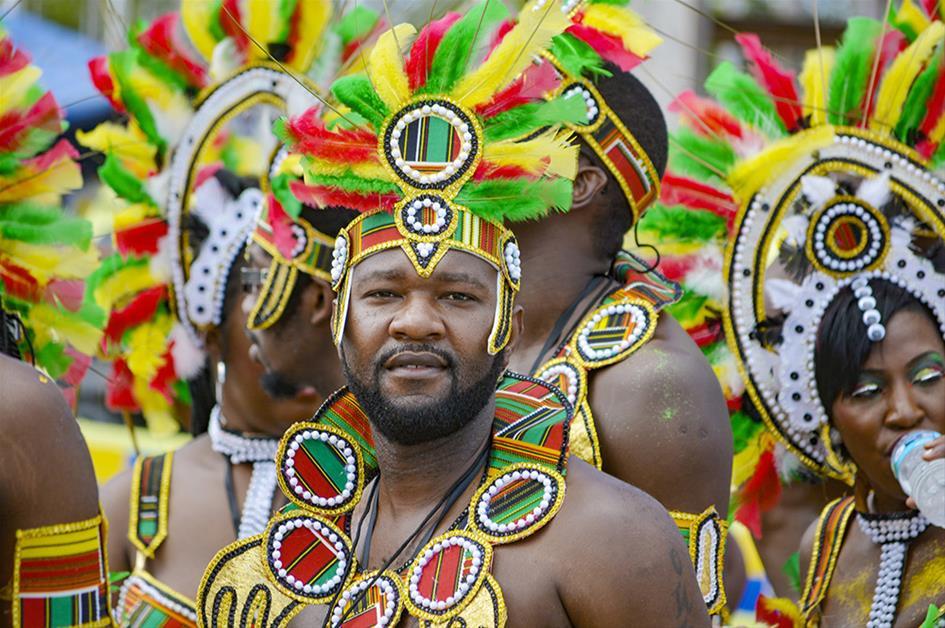
Feel the doors of your imagination open wide when you discover Barbados for therein lies the magic of our island, where you are limited only by your dreams and fancies. With every precious pearl of experience, your Barbados vacation will be one to remember.
There is just so much to do – so many treasures to uncover – as you soak up the warmth and enjoy the comforts of our beautiful island. Land lubbers and sea farers alike can have their pick of surf and turf activities appropriate for all ages and stages of calm or daredevil delight! Singles, lovers, friends and families also have rich and plentiful options to choose from. Whether you want to swim or sunbathe, party and play hard or enjoy art, culture and cuisine at its best, it’s right here waiting for you.
Discover Barbados. Lose yourself. Find you!



